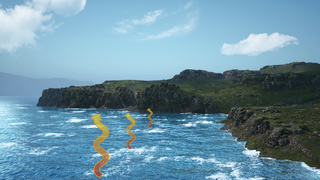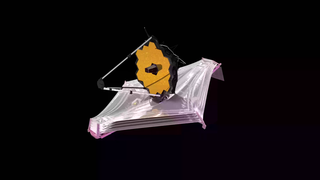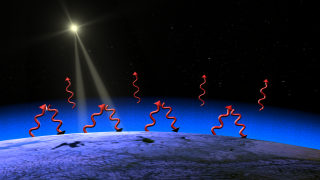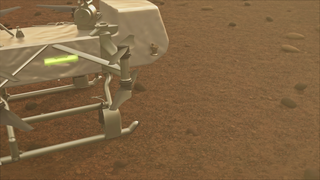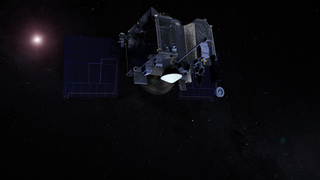Earth
ID: 20091
Experts now estimate that Tamarisk (saltcedar) has infested more than 3.3 million acres in the western United States. Tamarisk is one of our most harmful invasive species because the plant's long roots tap into underground aquifers. Its groundwater-absorbing qualities may be adding to the severity of the drought in the western U.S.
NASA and the USGS are working together to develop a National Invasive Species Forecasting System (ISFS) for the management and control of invasive species. The ISFS combines NASA Earth observations and models with field data to enhance USGS capabilities to map, monitor and predict the spread of significant invasive plant species.
As Tamarisk drops its leaves, it creates a debris layer known as 'duff' which chokes the ground below. This adds to the fuel load, compounding an already high fire danger in the drought-stricken West. When fires ravage an area, Tamarisk ignites quickly, leading to a more severe burn. To make matters worse, this invasive plant tends to come back more quickly than native plants in these burned areas.
Invasive Species: Tamarisk and Fire Sprouts
NASA and the USGS are working together to develop a National Invasive Species Forecasting System (ISFS) for the management and control of invasive species. The ISFS combines NASA Earth observations and models with field data to enhance USGS capabilities to map, monitor and predict the spread of significant invasive plant species.
As Tamarisk drops its leaves, it creates a debris layer known as 'duff' which chokes the ground below. This adds to the fuel load, compounding an already high fire danger in the drought-stricken West. When fires ravage an area, Tamarisk ignites quickly, leading to a more severe burn. To make matters worse, this invasive plant tends to come back more quickly than native plants in these burned areas.
Animation Credits
Susan Twardy (HTSI): Lead Animator
Jeffrey Morisette (NASA/GSFC): Scientist
Elizabeth A. Smith (HTSI): Writer
Jeffrey Morisette (NASA/GSFC): Scientist
Elizabeth A. Smith (HTSI): Writer
Please give credit for this item to:
NASA/Goddard Space Flight Center Conceptual Image Lab
NASA/Goddard Space Flight Center Conceptual Image Lab
Short URL to share this page:
https://svs.gsfc.nasa.gov/20091
Goddard TV Tape:
G2006-002
Keywords:
GCMD >> Earth Science >> Biosphere >> Ecological Dynamics >> Invasive Species
NASA Science >> Earth
GCMD keywords can be found on the Internet with the following citation: Olsen, L.M., G. Major, K. Shein, J. Scialdone, S. Ritz, T. Stevens, M. Morahan, A. Aleman, R. Vogel, S. Leicester, H. Weir, M. Meaux, S. Grebas, C.Solomon, M. Holland, T. Northcutt, R. A. Restrepo, R. Bilodeau, 2013. NASA/Global Change Master Directory (GCMD) Earth Science Keywords. Version 8.0.0.0.0
https://svs.gsfc.nasa.gov/20091
Goddard TV Tape:
G2006-002
Keywords:
GCMD >> Earth Science >> Biosphere >> Ecological Dynamics >> Invasive Species
NASA Science >> Earth
GCMD keywords can be found on the Internet with the following citation: Olsen, L.M., G. Major, K. Shein, J. Scialdone, S. Ritz, T. Stevens, M. Morahan, A. Aleman, R. Vogel, S. Leicester, H. Weir, M. Meaux, S. Grebas, C.Solomon, M. Holland, T. Northcutt, R. A. Restrepo, R. Bilodeau, 2013. NASA/Global Change Master Directory (GCMD) Earth Science Keywords. Version 8.0.0.0.0
